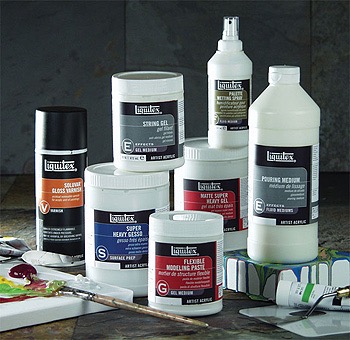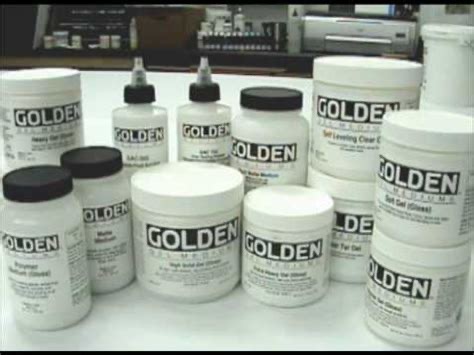Best Glue for Collage: A Mixed Media Artist’s Guide to Adhesives That Last
- Melanie Grant
- Aug 26
- 3 min read
TRANQUIL • LUMINOUS • ROOTED
Stories from the studio, reflections on process, and the art of the handmade.
When it comes to collage, one question comes up more than any other—what glue should I use?
Whether you’re layering vintage papers, mounting your work to panels, or wondering why matte gel sometimes goes cloudy, the topic of adhesives always sticks around (pun intended).
What Is the Best Glue for Collage?
The main adhesives I reach for are polymer-based: things like PVA and acrylic mediums or gels. They’re dependable, water-resistant, and play well with paper.
Here’s a quick rule of thumb: The thinner the paper, the thinner the adhesive. For thick papers, card stock, or canvas, go with something more substantial like PVA or a gel medium.
The Archival Question
If you’ve ever watched a once-white piece of tape turn yellow and brittle with age, you’ve seen firsthand what a non-archival adhesive can do. As artists, we want our work to last, so here’s what to look for:
Acid-free with a neutral pH
Water-resistant once dry
Flexible, not brittle
Non-yellowing over time
It’s also helpful to understand that “archival” can mean different things. In conservation, it often implies reversibility—the ability to remove or undo repairs. But in collage, we want permanence. We want our layers to stay where we put them.
Polymer-Based Adhesives - Adhesives That Last
This is the category where most of my adhesive work happens—and it’s where you’ll find many contenders for the best glue for collage, especially if durability and water-resistance are your goals. These are my go-to glues for collage, especially for works with multiple layers.
PVA (Polyvinyl Acetate)
A common, neutral pH adhesive that comes in a range of formulas.
Craft PVA is easy to use but not fully water-resistant.
Woodworking or framing PVA is stronger and more moisture-resistant.
Builder’s PVA is very thick and powerful—great for panels, but often too rigid for collage.
Acrylic Mediums and Gels
Made from acrylic resins.
Dry to a transparent, water-resistant, non-yellowing finish.
Come in different viscosities:
Soft Gel / Gloss Medium – similar to PVA in thickness, perfect for most collage work
Heavy or Extra Heavy Gel – best for canvas or thick materials, but too much for delicate papers
💡 Pro Tip: You can mix any of these to get the perfect consistency. Just don’t dilute more than 30% with water, or you’ll weaken the adhesive bond.
Gloss vs. Matte: What’s the Difference?
Both are available across gel and medium products, but there are a few things to note:
Matte products include matting agents (like marble or pumice dust), which can cause fogging when applied in thick layers.
If you love a matte finish, consider building your collage with gloss medium and sealing it with a matte topcoat like:
Matte medium
Matte varnish
Cold wax (I love Dorland’s)
For sketchbooks or small projects, a matte medium is just fine from start to finish.
Cellulose and Starch Adhesives
These pastes are loved in conservation circles—and have some great uses in collage too.
Pros:
Made from natural materials (no plastic!)
Slow drying = repositionable
Neutral pH and archival (though not water-resistant)
Types:
Methylcellulose – a powdered cellulose adhesive that dries clear. (Skip the wallpaper paste—those often include fungicides.)
Starch Pastes (rice, wheat, or potato) – used in bookbinding and paper conservation. Cooked pastes are available ready-made or you can make your own.
Brands to know:
Nori (rice paste, ready to use)
Yes! Paste (starch-based, great texture)
🔗 These are excellent for low-layer collage or when you want repositioning time. For thicker layers, pair with something stronger.
Mixing Adhesives: Best of Both Worlds
Combining starch or cellulose pastes with polymer adhesives like PVA or acrylic medium gives you:
More time to move your papers
Easier spreading (great for intricate layers)
Less plastic in your materials (up to 40% reduction!)
Here’s My Go-To Recipe:
Boil water and let it cool slightly.
Add 1 tsp methylcellulose powder to 100ml hot water in a mug.
Stir for 3 minutes. Let it rest for 2 hours (or overnight).
Mix with Golden gloss medium (or your fave) at a 60:40 ratio (medium:paste).
This combo has just the right consistency—easy to apply, long enough working time, and strong when dry.
Final Thoughts
Finding the right adhesive is part science, part personal preference, and part trial and error. My biggest advice? Experiment. Try different mediums on scrap materials. Pay attention to drying times, finishes, and how the adhesive behaves under your specific conditions (temperature, humidity, type of paper).
Got a favorite glue, trick, or question? Let’s keep the conversation going in the comments.




